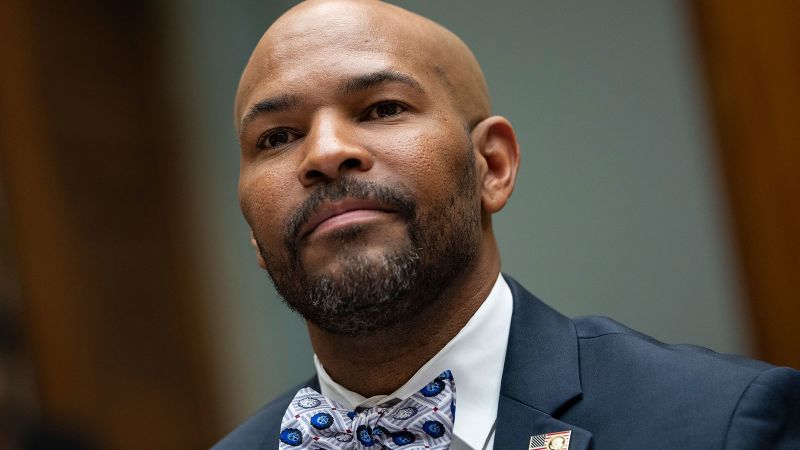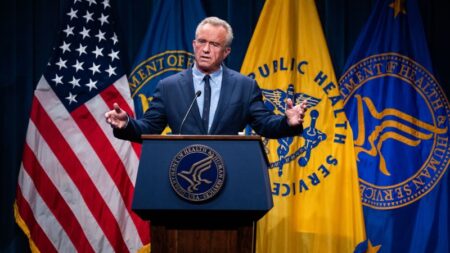The opioid crisis continues to pose a significant challenge across the United States, underscoring the need for effective public health strategies and policies aimed at mitigating its devastating impact. Recently, the passage of the “One Big Beautiful Bill Act” has stirred considerable concern among healthcare experts, particularly due to its predicted implications for Medicaid coverage. The act is anticipated to significantly reduce Medicaid services for millions of Americans, a move compounded by proposals to eliminate a crucial $56 million grant that supports overdose prevention training and distribution efforts. Such cuts threaten to undo the progress that has been made in combating opioid-related deaths, specifically among the approximately 1 million individuals who rely on Medicaid for treatment of opioid use disorder.
Medicaid expansion has historically provided essential resources and access to care for those grappling with addiction. It has led to noticeable decreases in opioid overdose deaths, particularly in states that have embraced these changes. However, the fear remains that dwindling federal funding could reverse these gains, particularly at a time when the nation faces an ongoing overdose crisis fueled largely by synthetic opioids like fentanyl. A robust legislative commitment to mental health services, addiction treatment, and overdose intervention tools is imperative to sustain progress and avoid an upward surge in overdose fatalities.
Despite federal estimates indicating a significant reduction in drug overdose deaths in 2024—pointing to the lowest levels in five years—more than 80,000 fatalities were recorded in the last year, primarily driven by synthetic opioids. The potent nature of drugs like fentanyl, which is reported to be 50 to 100 times stronger than heroin, presents major challenges for first responders, who often find themselves requiring multiple doses of naloxone, the standard reversal agent, to reverse the effects of an overdose.
Recent studies, such as those conducted by Dr. Mark Gold of Washington University, highlight the complexities involved in effectively reversing overdoses caused by high-potency synthetic opioids (HPSOs). These studies suggest that effective overdose reversal necessitates a targeted approach to match the potency and duration of the opioid involved, stressing the unpredictable nature of street drugs today. A promising alternative has emerged in the form of nalmefene, which has shown quick action and a longer duration compared to naloxone. Administered via nasal spray, nalmefene can quickly restore breathing and reduce the chances of immediate relapse into overdose symptoms.
Nevertheless, organizations like the American College of Medical Toxicology and the American Academy of Clinical Toxicology advocate for a cautious approach to employing nalmefene as the primary reversal agent, citing risks associated with prolonged withdrawal symptoms and the return of respiratory depression as its effects decrease. The risks associated with nalmefene aren’t unique, reflecting the concerns shared across all opioid antagonists. Fortunately, these challenges can often be managed effectively with proper medical monitoring, which is a standard procedure following opioid reversal.
The issue of funding is significant in the realm of opioid overdose prevention, especially as new agents like nalmefene are being developed. Cuts to research funding at the National Institutes of Health (NIH) and the Centers for Disease Control and Prevention (CDC) threaten to hinder progress in addressing the continually evolving opioid epidemic. Dangerously, these proposed budget reductions place advanced treatments and public health strategies at risk, potentially stalling innovation and preventive efforts.
Moreover, it is crucial to understand that policy plays a significant role in controlling the supply of synthetic opioids. Organizations like the World Health Organization have advocated for stricter international controls and border security to combat the illicit production of fentanyl and its analogs. Equally important is proactive education and training for first responders, emphasizing the necessity for immediate intervention techniques such as cardiopulmonary resuscitation (CPR) alongside the use of reversal agents.
Despite the recent decline in national overdose deaths reported by the CDC, vulnerabilities remain, particularly in communities facing disparities related to geography, race, or socioeconomic status. The rise of fentanyl-laced stimulants also complicates the situation significantly—turning substance use into a potentially lethal risk for individuals who may not be accustomed to opioids, thus highlighting the need for a comprehensive strategy encompassing policy reform, targeted education, and research into innovative reversal tools.
Ultimately, safeguarding Medicaid and overdose prevention funding is imperative for maintaining the strides made in reducing opioid overdose deaths. To effectively tackle the ongoing crisis and enable communities to save lives, cohesive efforts that combine policy influence, training programs, and advancements in treatment technology are essential. It is through these multifaceted strategies that we may cultivate resilient communities equipped to combat the ever-evolving challenges posed by the opioid epidemic.












